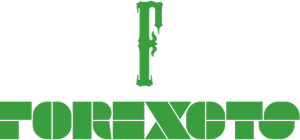EUR/USD at Key Inflection Point Ahead of US PPI Data

Towards the end of the week, the EUR/USD has found itself at a key inflection point ahead of US PPI data and the upcoming Central Bank meetings. Yesterday, the Euro had its second day of gains after breaking the 1.0600 handle, and today, the Dollar Index has continued its decline. However, while the EUR/USD continues to grind higher, the market still remains cautious and awaits key data releases.
This week’s EUR/USD moves have been driven by optimism about the upcoming vaccine rollout, as well as the likelihood of a faster rollout. As the European Medicines Agency noted, it was left up to each country to decide whether to use the vaccine. Traders also have to consider peak price. A better tone for business spending will likely result in a lower unemployment rate. In addition, a stronger economic outlook could lead to major central banks raising interest rates.
The EUR/USD has been trading within a narrow range, between the 1.1600 and 1.0600 handles, since the end of the week. Its movement up to the 1.1900 area was only short lived, as the inverse head and shoulders pattern formed and the price fell back to 1.1704. Despite this, the bulls are still in control, and the pair is attempting to climb back above the 1.0600 mark. Regardless, the pair has a long way to go before it can break above the 1.0600 level. The bears will be watching to see if the price can break down and retest the 1.1600 support.
The US economy has been relatively strong in recent months, and the recent earnings releases have given traders hope for the near future. This optimism could lead to a higher level of volatility and a rise in the EUR/USD. Nevertheless, there are still plenty of uncertainties to contend with, including the ongoing Greece funding crisis and the potential for a Greek default. Until the Greek budget deficit improves, the market will be cautious and skeptical. In the meantime, investors will be looking for the next big US earnings report to help provide some respite.
In the meantime, the US is in the midst of several important economic events, including key US PPI and University of Michigan data. In addition, the Fed is expected to unveil a plan for financial regulatory reform. Finally, the ECB is preparing to discuss further rate hikes. The ECB’s policymaker Gabriel Makhlouf stated that the rate hikes “will probably be at least 50bps,” indicating that more hikes are likely. The ECB is unlikely to rule out a 75 bps hike in December.
Meanwhile, Chinese commodity prices were weighing on the antipodean markets. The weaker CNY reference rate also contributed to the decline. The currency has lost about 13% so far this year, and a recent drop in value should make the current entry point more attractive.
In other news, German Chancellor Merkel’s coalition has begun plans to curfew in areas of high infection. This will likely limit non-essential retail sales. The United States Secretary of State has warned against “changing the status quo by force,” citing China’s aggressive actions against Taiwan. The US is also working on a financial regulatory reform plan. This may affect the currency, but is not likely to drive it significantly.

